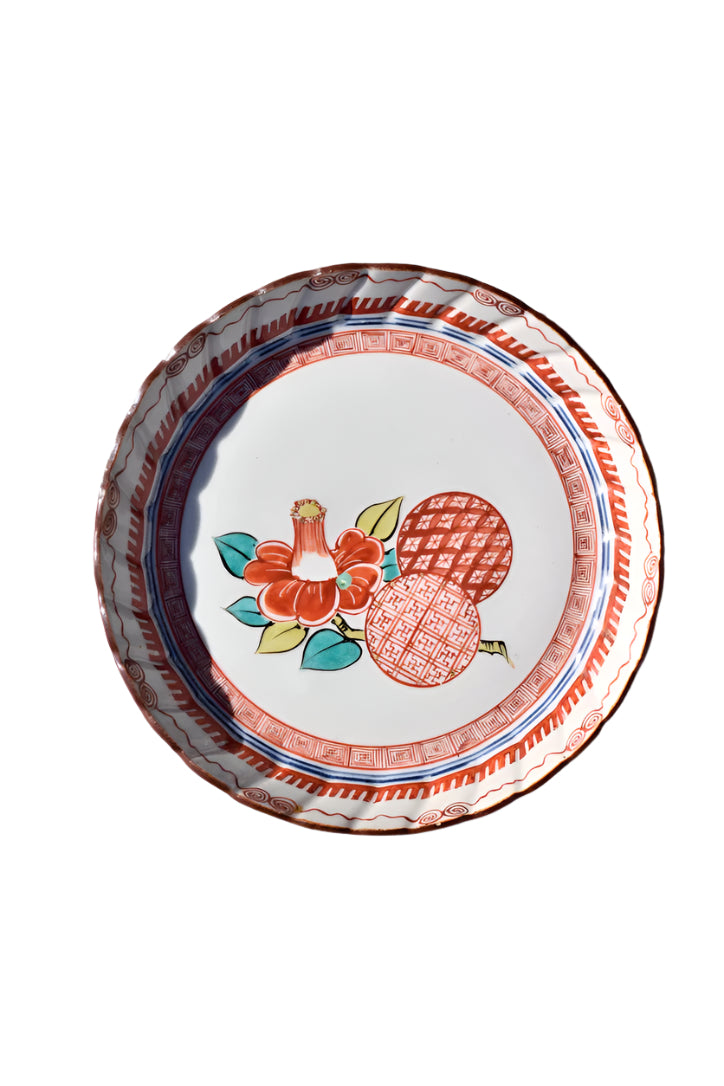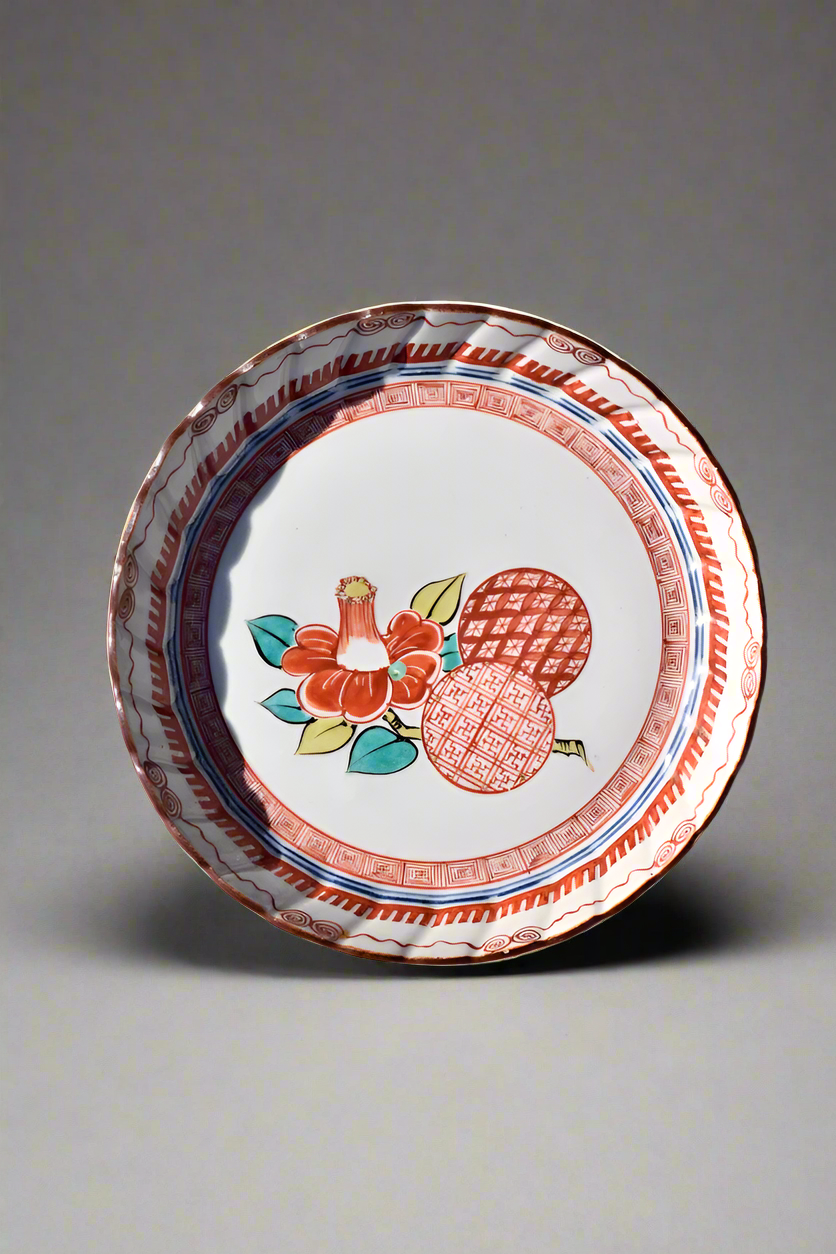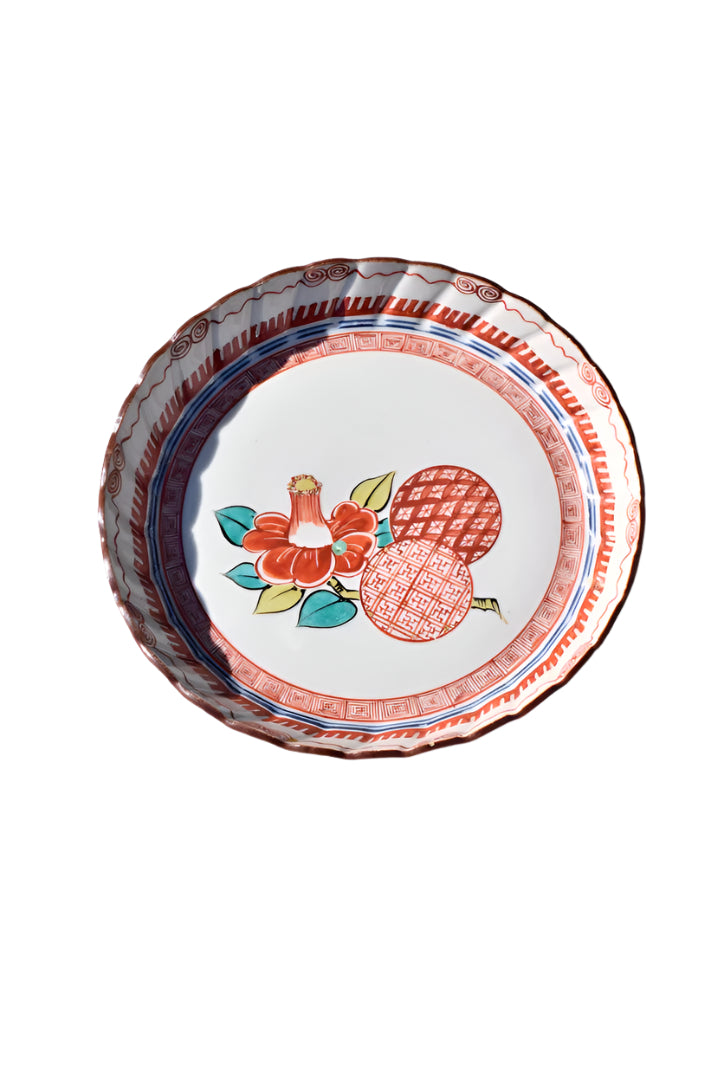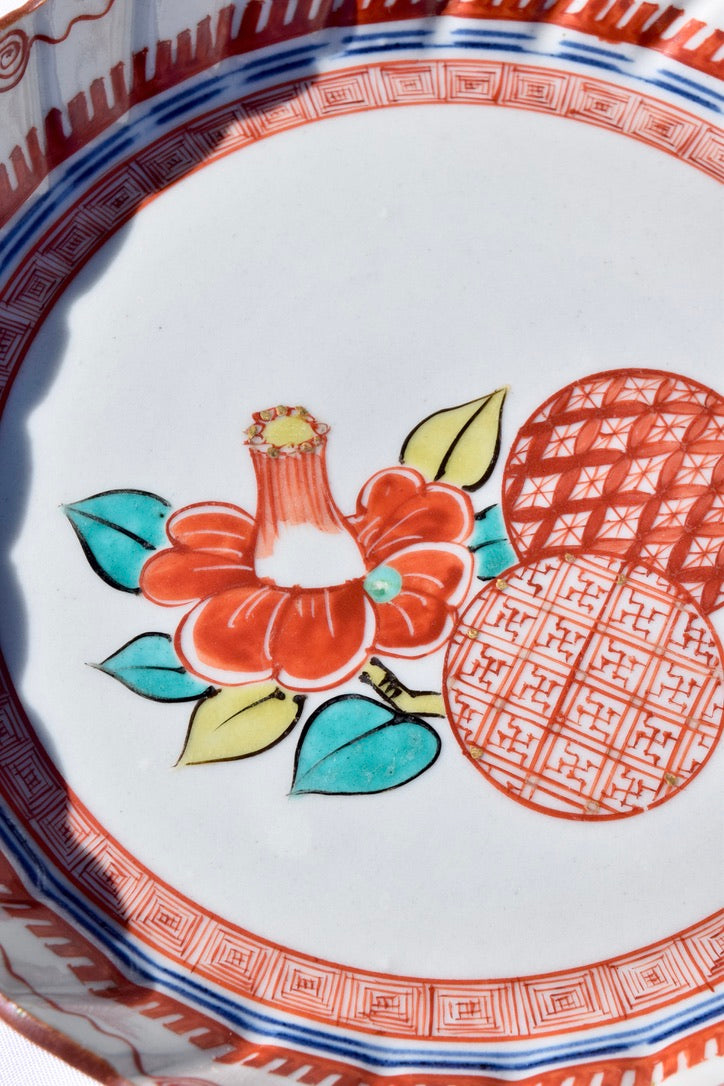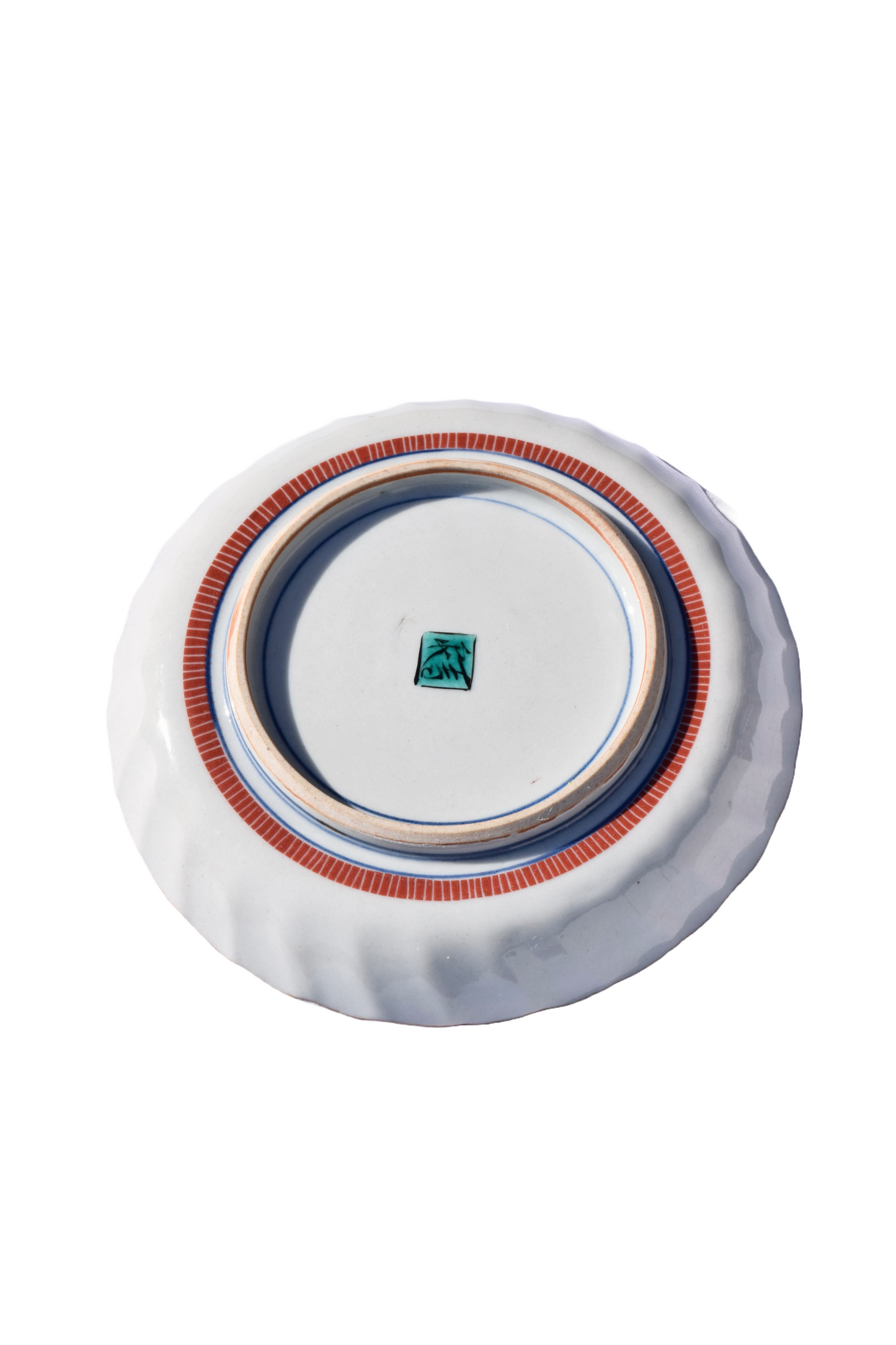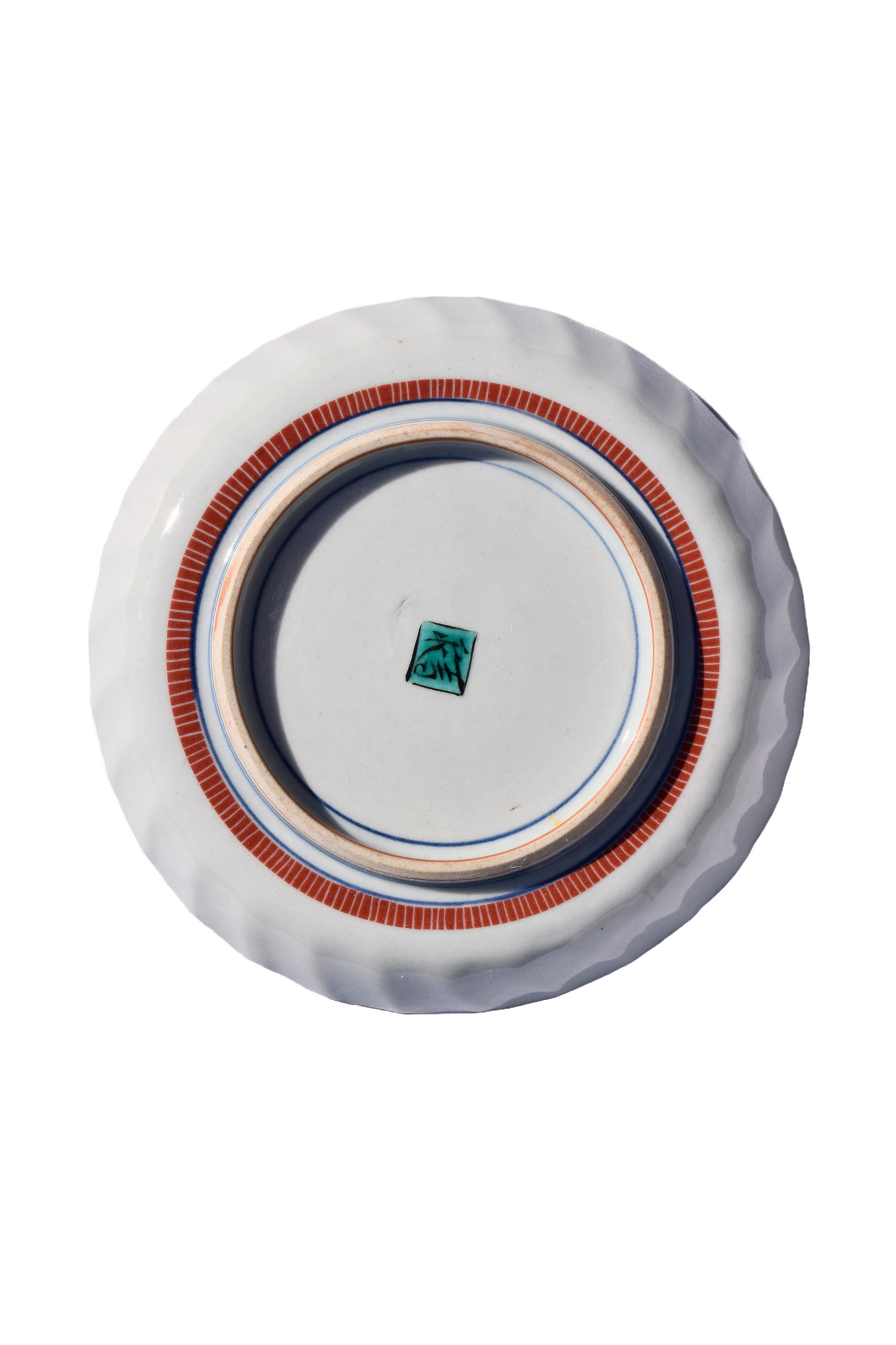Japanese Imari Porcelain Plate
Japanese Imari Porcelain Plate
Couldn't load pickup availability
JAPANESE IMARI PORCELAIN PLATE
Era: Late 19th/Early 20th Century
Origin: Arita, Japan
Material: Porcelain with Polychrome Decoration
OVERVIEW:
A classic Japanese Imari porcelain plate featuring the distinctive color palette and decorative motifs characteristic of this renowned ceramic tradition. This refined example showcases the meticulous craftsmanship and artistic sensibility that made Arita porcelain highly prized both in Japan and throughout the Western world.
SPECIFICATIONS:
• Diameter: 6.25 inches
• Material: Fine porcelain with polychrome decoration
• Origin: Arita region, Japan
• Period: Late 19th/Early 20th Century
• Type: Decorative Plate
DESIGN ELEMENTS:
• Decoration:
- Central floral motif with camellia or peony blossom
- Stylized geometric fruit or pomegranate designs
- Concentric border patterns in red and blue
- Greek key and scroll motifs in borders
- Traditional Imari color scheme
• Artistic Features:
- Hand-painted floral elements
- Harmonious composition with central design
- Layered decorative borders
- Balanced use of negative space
- Complementary color arrangement
• Technical Features:
- Underglaze blue detailing
- Overglaze iron-red and enamel colors
- Fine porcelain body
- Scalloped or contoured rim
- Traditional glaze application
CONDITION:
Excellent Antique Condition
• No chips or cracks
• Vibrant unfaded colors
• Clean glazed surface
• Well-preserved decoration
• No notable damage
HISTORICAL SIGNIFICANCE:
This plate represents the famed Imari porcelain tradition that originated in the Arita region of Japan during the 17th century. Named after the port from which it was shipped to markets throughout the world, Imari ware became Japan's most successful ceramic export during the Edo period. The distinctive palette of underglaze blue, overglaze iron red, and additional enamel colors became so popular in Europe that it inspired numerous imitations from major Western porcelain factories. This example from the late 19th or early 20th century continues the traditional aesthetic that made Imari internationally renowned.
DECORATIVE SUGGESTIONS:
• Wall display with plate hanger
• Curio cabinet or china hutch showcase
• Grouped with complementary Asian ceramics
• Accent piece on console or sideboard
• Part of a collected tablescape
COLLECTING NOTE:
Japanese Imari porcelain represents an important category in ceramic collecting, prized for its historical significance, technical quality, and distinctive palette. This well-preserved plate exemplifies the classic Imari aesthetic that has endured for centuries. The floral and geometric motifs, combined with the characteristic color scheme, make this a representative example of the style that continues to be sought after by collectors of Asian porcelain and decorative arts.
Share
